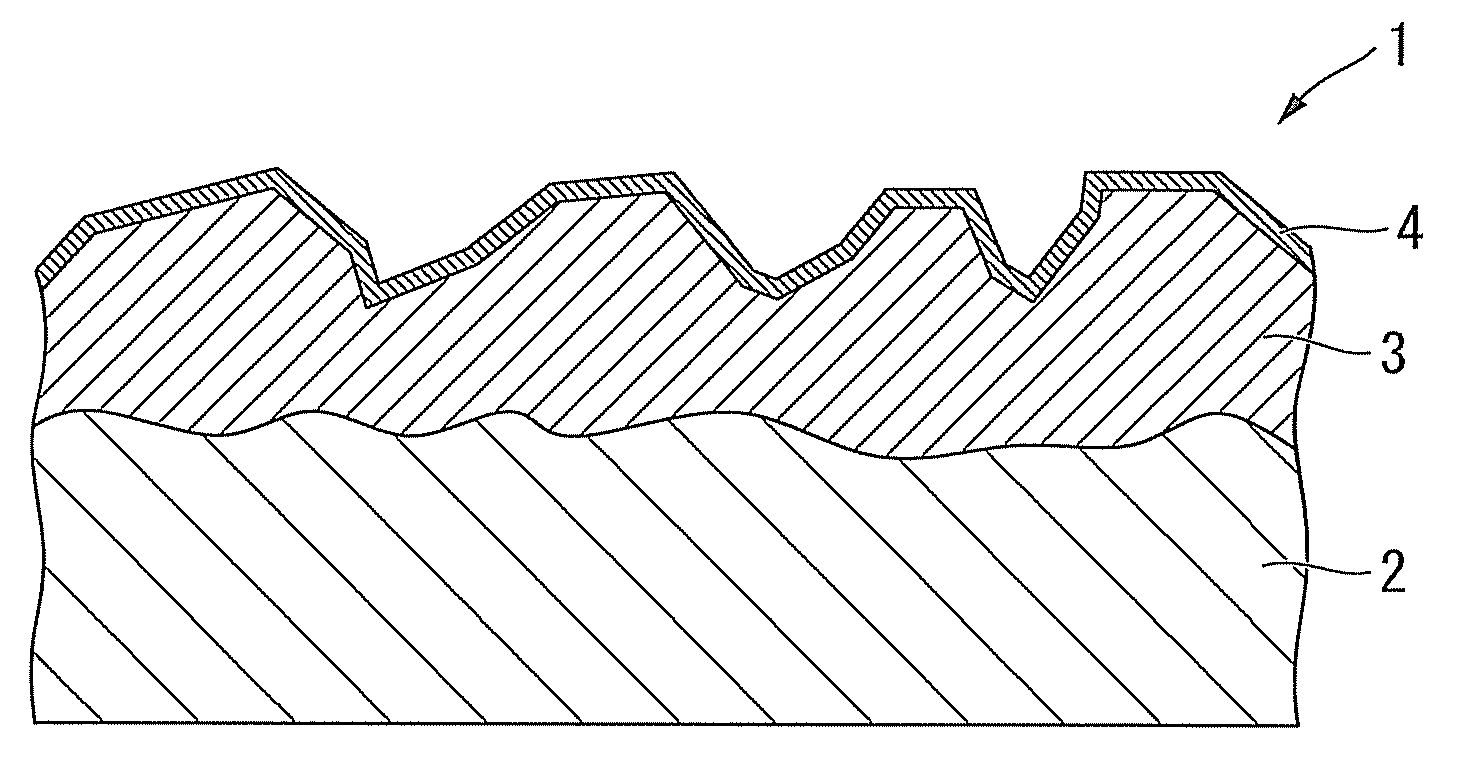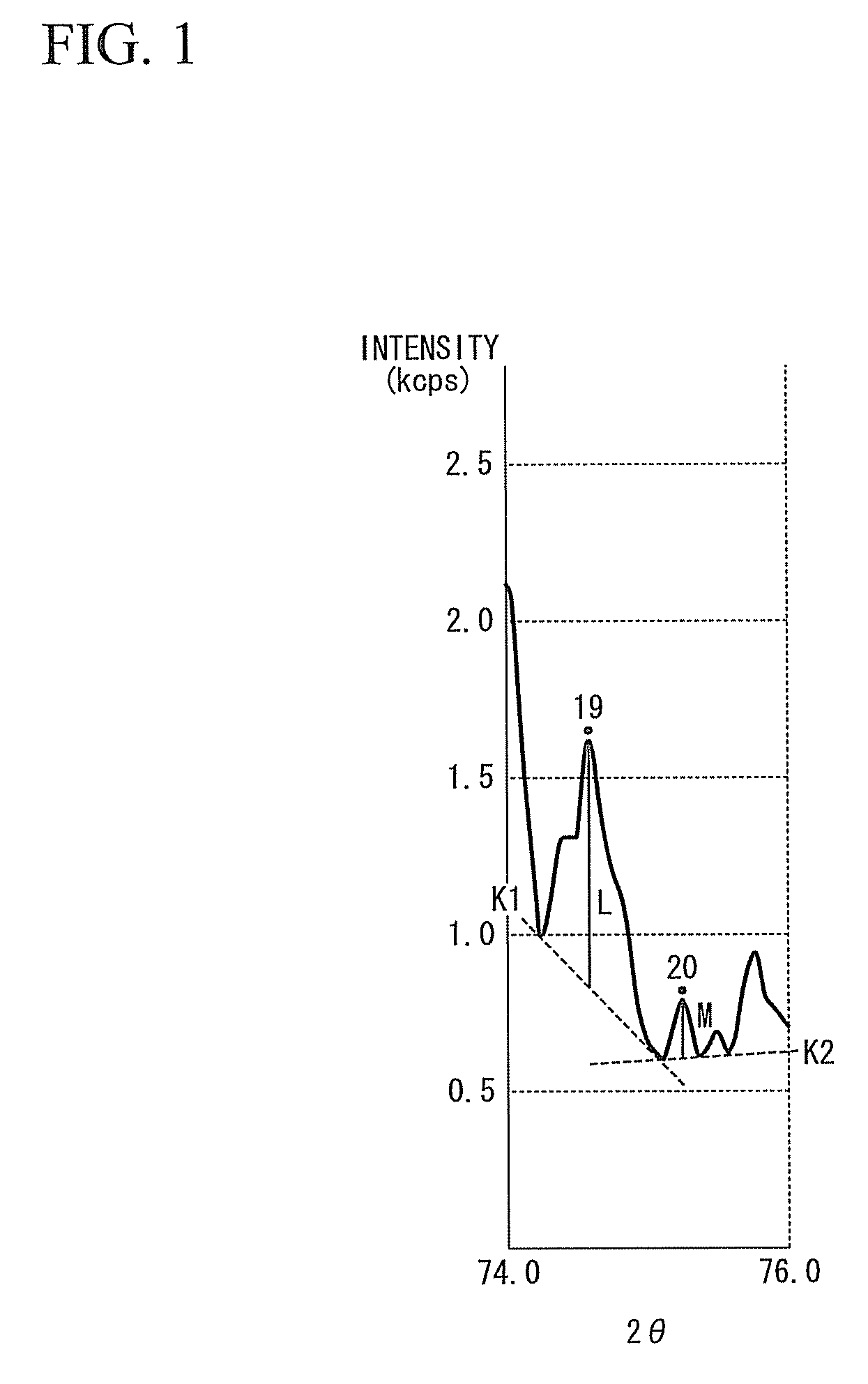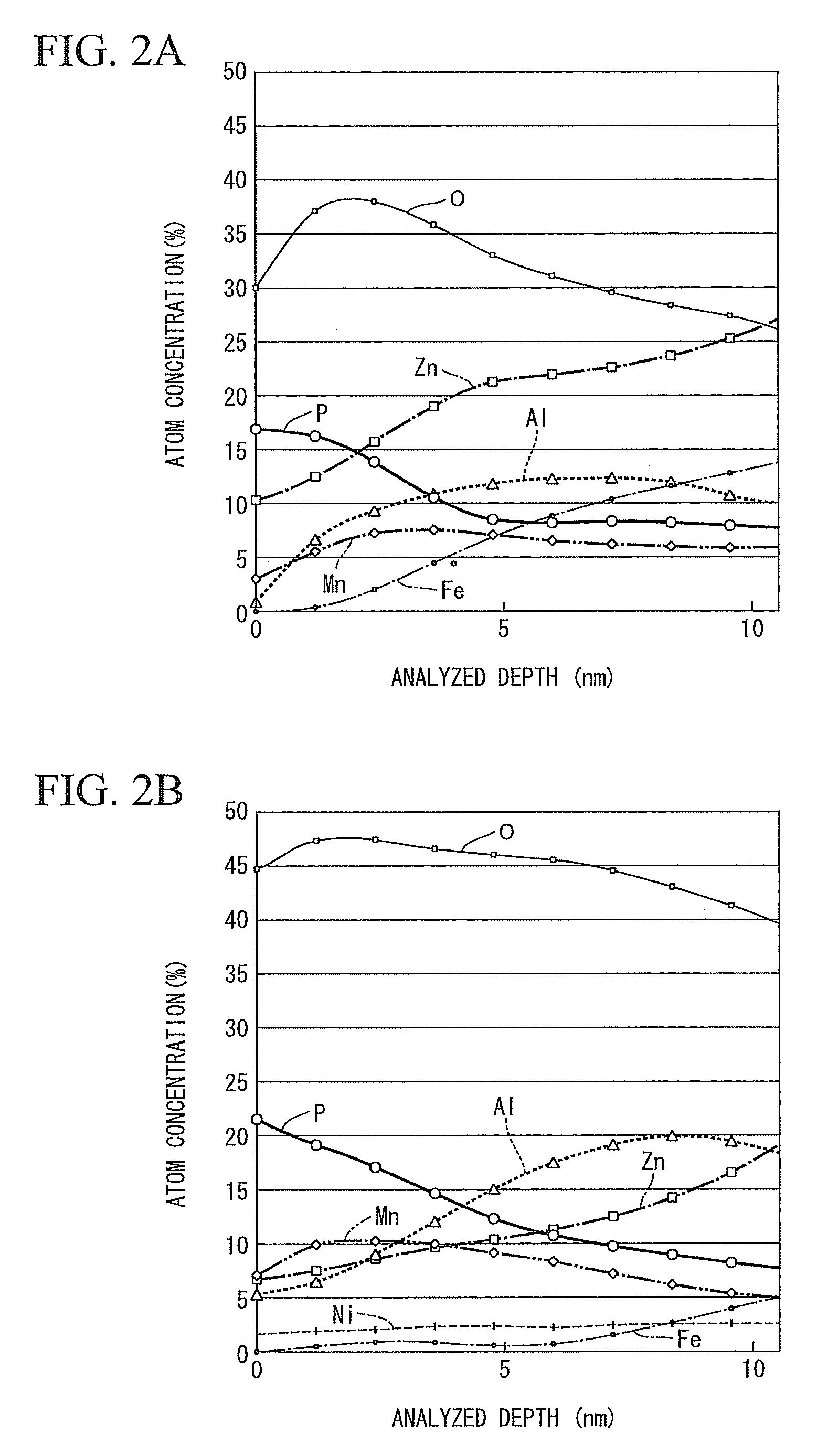Galvanized steel sheet
a technology of galvanized steel and galvanized steel sheets, applied in the direction of superimposed coating process, instruments, transportation and packaging, etc., to achieve the effect of excellent lubricity and chemical conversion treatability, extended range of press forming, and higher yield
- Summary
- Abstract
- Description
- Claims
- Application Information
AI Technical Summary
Benefits of technology
Problems solved by technology
Method used
Image
Examples
example 1
[0089]Next, the invention will be described with reference to examples. The invention, however, is not limited to these examples.[0090](1) Test Specimens
[0091]The composition of sample steel sheets are shown in Table 1. Cold-rolled steel sheets with 0.7 mm thickness were used.[0092](2) Galvanizing Conditions
[0093]The test specimen was degreased, heated to 800° C. in a 4% H2-N2 atmosphere and left for 60 s. Then, the test specimen was air-cooled to 470° C., immersed in a hot-dip galvanizing bath of 460° C. for 3 s and wiped to control the amount. The obtained test specimen was heated and alloyed under the conditions shown in Table 2, which will be described later, air-cooled to 350° C., mist-cooled and then taken out.[0094](3) Analysis of Galvanizing Layer
[0095]The amounts of Zn, Fe, and Al in the galvanizing layer were measured by inductively coupled plasma (ICP atomic emission spectrometry) after the galvanizing layer was dissolved with inhibitor-containing hydrochloric acid to whi...
example 2
[0119]Next, Example 2 will be described that differs from Example 1 in the galvanizing process.[0120](1) Test Specimen
[0121]The composition of sample steel sheets are shown in Table 1. Cold-rolled steel sheets with 0.7 mm thickness were used.[0122](2) Galvanization Conditions
[0123]The test specimen was degreased, washed in acid, and then pre-plated with Ni by electroplating in a Watt bath. The test specimen was then heated to 470° C. in a 4% H2—N2 atmosphere, immersed in a hot dip galvanizing bath of 460° C. for 3 s and then wiped to control the amount. The test specimen was then heated and alloyed under the conditions shown in Table 4, air-cooled to 450° C., subsequently mist-cooled and taken out.[0124](3) Analysis of Galvanizing Layer
[0125]The amounts of Zn, Fe, Al and Ni in the galvanizing layer were measured by inductively coupled plasma (ICP atomic emission spectrometry) after the galvanizing layer was dissolved with inhibitor-containing hydrochloric acid to which 0.6% of hexam...
PUM
| Property | Measurement | Unit |
|---|---|---|
| thickness | aaaaa | aaaaa |
| thickness | aaaaa | aaaaa |
| thickness | aaaaa | aaaaa |
Abstract
Description
Claims
Application Information
 Login to View More
Login to View More - R&D
- Intellectual Property
- Life Sciences
- Materials
- Tech Scout
- Unparalleled Data Quality
- Higher Quality Content
- 60% Fewer Hallucinations
Browse by: Latest US Patents, China's latest patents, Technical Efficacy Thesaurus, Application Domain, Technology Topic, Popular Technical Reports.
© 2025 PatSnap. All rights reserved.Legal|Privacy policy|Modern Slavery Act Transparency Statement|Sitemap|About US| Contact US: help@patsnap.com



